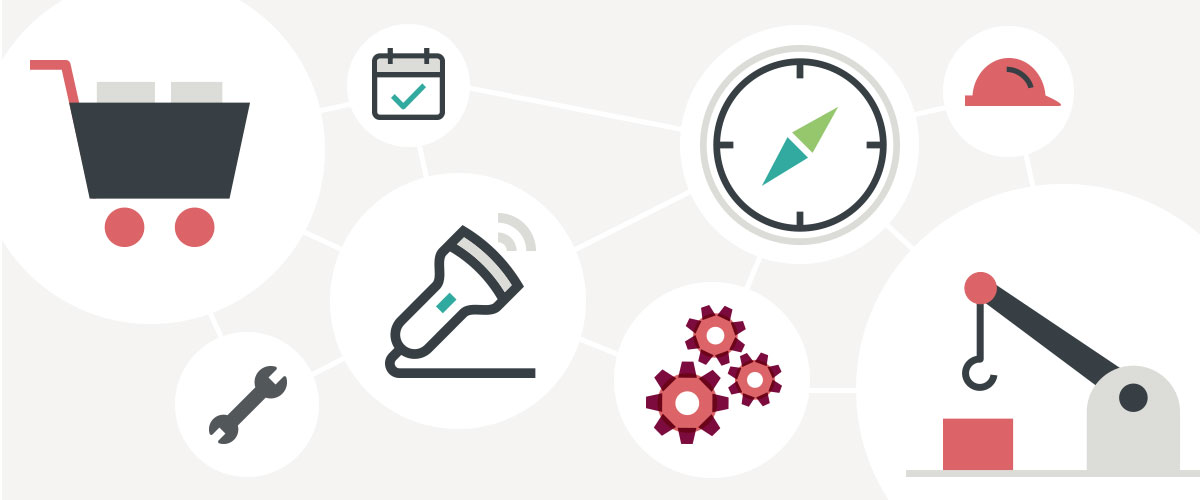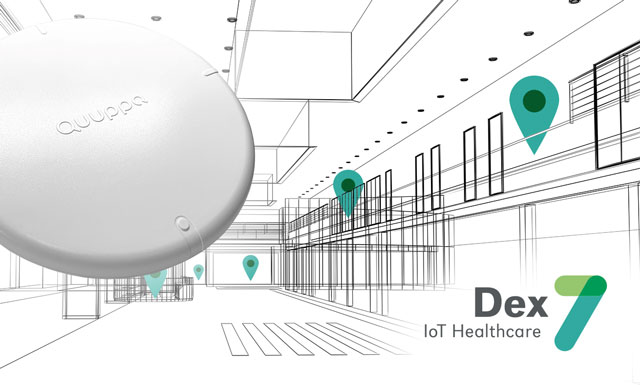
Seven IoT examples that immediately increase efficiency
Reading time: 12 minutes | 1187 words | Author: Pascal Poletto
Gartner conducted a survey in 2019 regarding the use of IoT solutions. The survey compared industries according to whether they are already using IoT solutions on a large scale, are starting a pilot test or are in a proof of concept phase. The results are sometimes astonishing. It is not the manufacturing industry that takes first place here, but the life sciences and engineering. Logistics companies are in second place. In third place are public administrations. Only in fourth place is the manufacturing industry. The health industry - overall - is only in fifth place.
Such surveys also show that the use of IoT solutions is related to the size of the company and thus to the available budget. This leads to the dangerous situation that small and medium-sized companies in particular will lose touch with the future. Apart from budget shortages and a lack of skilled workers, other obstacles cited are the - supposedly - missing fields of application. Moreover, these are often considered to be more complicated than they actually are.
In the following we provide you with seven IoT application examples that small and medium-sized companies can also use to become more efficient directly.

Example 1: IoT in the construction sector
Starting point:
The construction of a building, a parking lot or even an airport should be fast and efficient. Every day many different devices are used by many people. Compliance with occupational health and safety regulations is a top priority here.
Challenge:
Tools, building materials and equipment must always be available to guarantee the effectiveness of a construction site. In reality, one of the biggest time wasters is that workers rarely know whether tools and materials are available in sufficient quantity before starting work on the construction site. If the cement is missing at the start of work, runs out a little later or concrete cement mixing machines are not found, unnecessary empty runs, journeys or time-consuming searching must be accepted.
Solution:
IoT can put an end to these little time-eaters. If, for example, tools or building materials are equipped with durable sensors based on NarrowBand technology, the components required for further construction can be located and found on the building site. It would also be feasible to use predictive analytics functions to calculate when cement or stone will run out and thus ensure that the necessary quantity is always available on the construction site at the right time.

Example 2: IoT in retail trade
Starting point:
Every day, customers in supermarkets and shopping centres are on the lookout for their favourite products. However, attractive e-commerce offers are increasing the pressure on food companies with traditional sales areas. Customers are used to finding their goods quickly and in sufficient quantities.
Challenge:
Certain shelves, displays and positions in the store are visited particularly frequently, others hardly at all. The evaluation of which these are exactly, where they are located and which route customers take to these products gives those responsible important insights. Having accurate insights into movement and buying patterns would greatly simplify the supply chain and quality assurance in the store.
Solution:
IoT is able to monitor the path of shopping carts and baskets in stationary trade by means of sensors. Identification of the different spots can be visualized by heat maps. In this way, supply chains or warehouse logistics can be optimized: For example, the reorganization of goods and shelves to increase sales. A personnel guidance system to the desired goods would also be possible. It would also be feasible to additionally secure quality assurance in food retailing with temperature sensors. In this way, conspicuous features can be quickly identified and counter-strategies applied.

Example 3: IoT in occupational safety
Starting point
Occupational safety regulations in companies often only exist in theory. The employees go about their daily work without giving much thought to occupational safety. Compliance is mandatory for many.
Challenge:
Unconsciously there are accumulations or violations of occupational safety, where and why usually remains unknown. However, this information would be of extreme importance for the project managers in the company. Only in this way could they take countermeasures.
Solution:
IoT tracking sensors can visualize heat maps of frequent walking routes and the coordination of optimal escape routes. This would allow an anonymous count of distance rule violations and project managers would know where these violations usually occur.

Example 4: IoT for capacity utilization forecast
Starting point
On average hospitals have 20 - 30 IoT-capable ultrasonic units in use. The investment sum for these devices amounts to around 1.8 million euros. Despite the value of these devices, asset management is not yet an issue in most hospitals.
Challenge:
The locations, the utilization or even the unauthorized theft of the ultrasonic devices is not monitored - there is no utilization management and controlling. Either the devices are not found or they are currently in use and therefore cannot be used. Up to 10 % of the devices are even stolen per year. Ergo: medical devices are used very inefficiently.
Solution:
IoT enables seamless performance monitoring with information on utilization and location data of each ultrasonic device and groups of systems. Implementing an IoT-based resource management tool to reduce investment, up to ultrasonic-as-a-service is all possible. The use of surveillance zones, for example at the entrance and exit of a station, also allows theft monitoring without having to monitor an entire hospital. In this way, usage data would be recorded across manufacturers, synergies would be identified and processed in user-specific dashboards.

Example 5: IoT on asset management
Starting point:
A manufacturer of dental medical equipment offers managed services and wants to optimize the associated support processes.
Challenge:
Recurring support services are often not needed at the time they are provided or are provided too late. There is no tool to inform the customer or supplier about the health status of the systems.
Solution:
IoT sensors can measure the flow of liquids and thus calculate the next maintenance date. This data is made available to the manufacturer on request. This means that maintenance intervals can be tailored to requirements and thus often reduces downtime.

Example 6: IoT in hospital
Starting point:
Hospitals must regularly check their medical equipment for compliance with legal requirements.
Challenge:
Every day a team of technicians must maintain the medical IT equipment in the hospital. In doing so, they need a lot of time to search for the devices in the building.
Solution:
Based on the NarrowBand technology, all devices to be serviced can be equipped with long-life sensors. These sensors can be used to locate the medical devices on the hospital premises.

Example 7: IoT in water management
Starting point:
Sewers and water pipes underground are located in areas that are difficult to access. Ensuring that these pipes function smoothly is very important for the daily lives of hundreds of thousands of people.
Challenge:
Maintenance work is carried out on a rotational basis, with people having to go directly into the shafts to work on the pipes. Regardless of whether maintenance or repairs are due, this must first be verified on site.
Solution:
IoT sensors can measure environmental influences such as temperature and humidity directly on the cables. Vibrations and noises can also be measured to detect abnormalities. In this way, maintenance can be carried out preventively and as required in the event of irregularities. Whether maintenance is necessary can already be judged before the on-site assessment using the collected metrics. This minimizes downtime and increases efficiency.

Press release
Software developer DextraData will in future rely on the real-time tracking technology of the Finnish manufacturer Quuppa for its Dex7 IoT platform. The intelligent tracking system provides the DextraData Dex7 IoT platform with more flexibility, transparency and real-time tracking data with centimeter-precision.
ihr kontakt

Pascal Poletto
Business Consultant, DextraData
T +49 201 9 59 75 256
E pascal.poletto[at]dextradata[dot]com